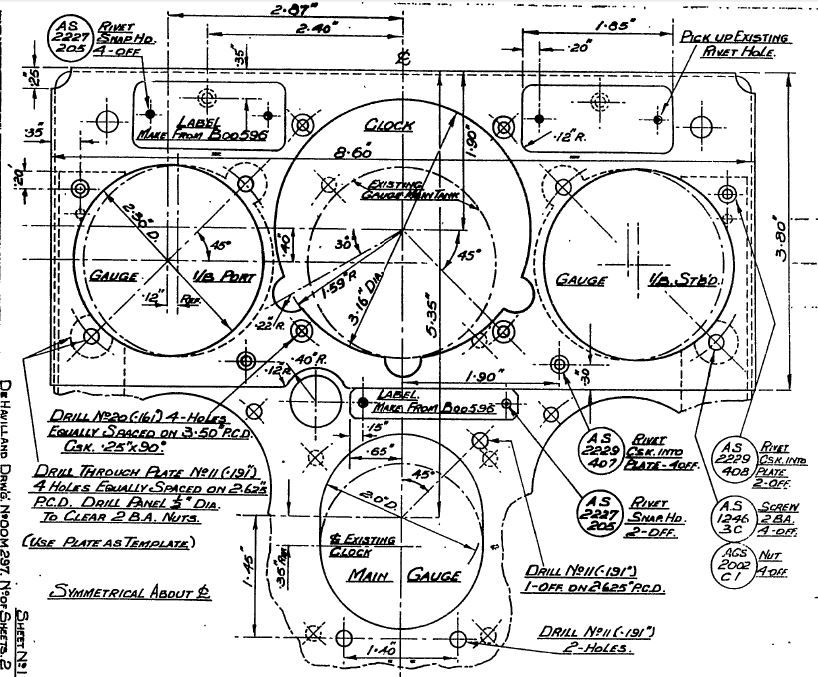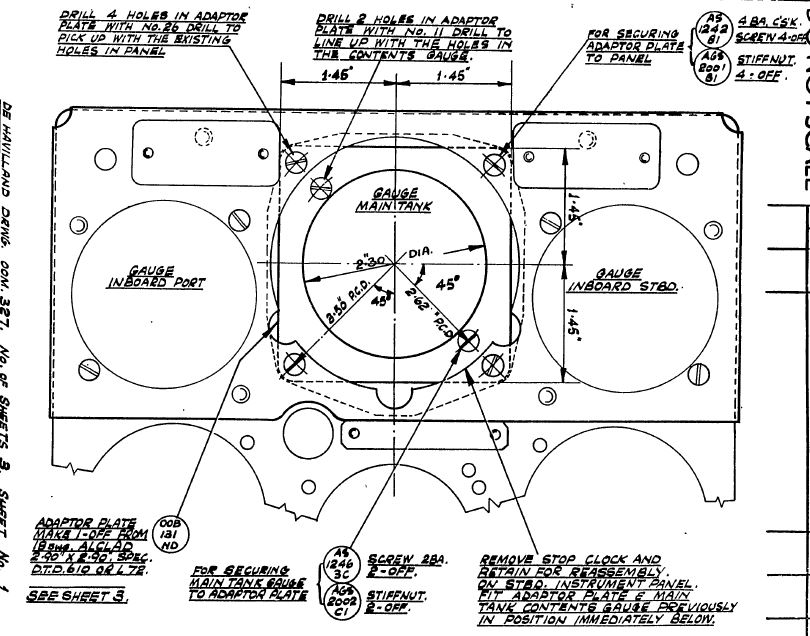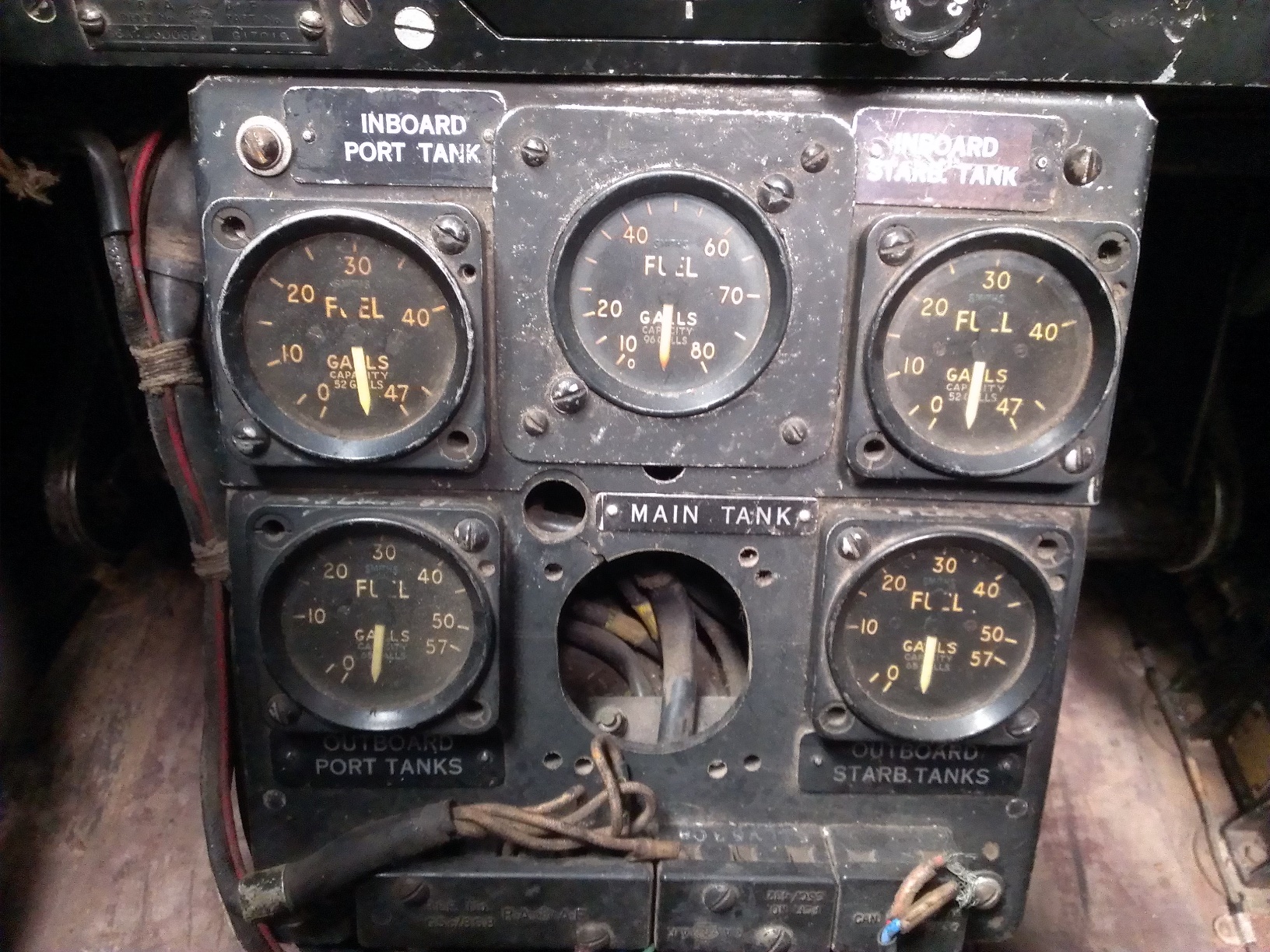Five years ago I saw a photo that showed a rather unusual single-seat Vampire fuel gauge panel. The regular panel, when you look at the front face of it is mostly just gauges, placards and the base panel which is made of Tufnol – fibre reinforced phenolic.
This mystery panel had been seriously messed with! The top line of gauges now sat in a folded aluminium part that was attached to the Tufnol. This component in itself didn’t make for a bad looking assembly, but overall it was rather rough looking.
What was this assembly? I thought it was a rough repair, but why so complicated? Why not just replace the panel!
Turns out there were two mods involved. Firstly (RAAF mod 160, DH mod V.204) the Mk.II 8-day clock was replaced by the V.308 stopwatch clock, with the centre fuel tank gauge moving to the old clock position, and the new clock being installed in the centre-top position. The folded aluminium part was required to reinforce the Tufnol that had been dramatically weakened by the much larger hole for the clock, and to provide sufficient space for it.
Somebody didn’t like that idea, so the larger clock was then moved over to the right hand instrument panel, and the centre fuel tank gauge was then moved back to its original position. (RAAF mod 231, DH mod V224.)
I think that most aircraft bypassed this mess, with the larger clock immediately being installed in the RH panel, as the aircraft came in for servicing and mods.
However, it turns out that A79-14 is a case that was fitted with the mongrel panel (not the panel I originally saw); see the photo below.
Although I still don’t understand why the original panel wasn’t replaced during either mod, given how much work I imagine was involved, I think it is nice that this oddity is preserved. Perhaps for some lessons on how things should have been done properly the first time (new clock in RH panel straight up), or otherwise on the diversity in modifications in our remaining Australian-built single-seat Vampires.



